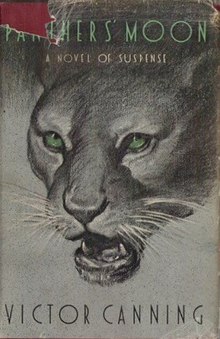
Panther's Moon is a 1948 spy thriller novel by the British writer Victor Canning. It was his second post-war novel, following The Chasm, as he had largely been taken a break from writing during his wartime service.

Dark Duet is a 1942 spy thriller novel by the British writer Peter Cheyney. Cheyney had become known for his hardboiled crime thrillers featuring Lemmy Caution and Slim Callaghan, but this novel was his first fully-fledged espionage novel. The novel is set in wartime London, Lisbon and Ireland. It was published in the United States with the alternative title The Counterspy Murders.

Mysterious Mr. Sabin is a 1898 spy thriller novel by the British writer E. Phillips Oppenheim. It was the first spy novel by Oppenheim, a genre which he came to dominate during the First World War and interwar era. Revolving around a plot of a Frenchman selling British military secrets it became a bestseller, establishing him as a popular writer. It has been described as the novel "that launched Oppenheim's career of xenophobic espionage fantasy". It contains elements of invasion fiction, a common genre theme at the time.

Time Right Deadly is a 1956 thriller novel by the British writer Sarah Gainham. Her debut novel, it was shortlisted for the Gold Dagger Award, losing out to Edward Grierson's The Second Man. Like many of her novels it takes place in post-war Austria, where she lived.
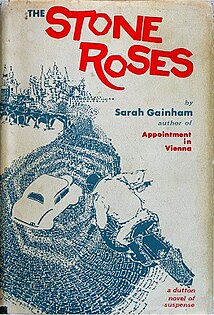
The Stone Roses is a 1959 spy thriller novel by the British writer Sarah Gainham. It is set in Prague shortly after the Communist coup in Czechoslovakia.

The Cold Dark Night is a 1957 spy thriller novel by the British writer Sarah Gainham. Her second novel, it is set at the height of the Cold War when the 1954 Berlin Conference saw the Big Four foreign ministers arrive in the divided city. Gainham had worked in Berlin as a journalist at the time of the Conference.
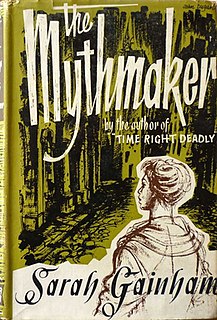
The Mythmaker is a 1957 spy thriller novel by the British writer Sarah Gainham, her third published novel. At with many of her works it takes place in Vienna, where she settled in the post-war era. It was released in the United States in 1958 under the alternative title Appointment in Vienna.
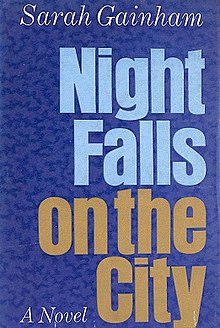
Night Falls on the City is a 1967 novel by the British writer Sarah Gainham. A commercial and critical success, it was the first of her Vienna trilogy followed by A Place in the Country (1969) and Private Worlds (1971). Marking a change from the series of spy thrillers she produced in the 1950s, it remains her best-known work
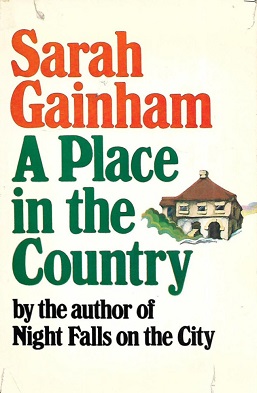
A Place in the Country is a 1969 novel by the British writer Sarah Gainham. It was the second in her Vienna trilogy following on from the popular first novel Night Falls on the City.
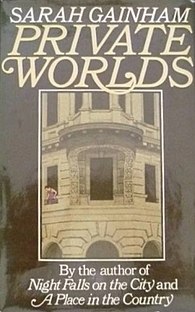
Private Worlds is a 1971 novel by the British writer Sarah Gainham. It was the third in her Vienna trilogy following on from the popular first novel Night Falls on the City.
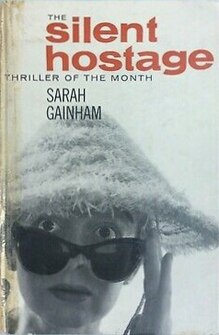
The Silent Hostage is a 1960 spy thriller novel by the British writer Sarah Gainham. Before writing her most celebrated work Night Falls on the City, Gainham produced several thrillers set in Continental Europe where she had lived since 1947. The novel takes place on the Adriatic Coast of Yugoslavia not long after the Second World War.

The Bell of Death is a 1939 mystery detective novel by Anthony Gilbert, the pen name of British writer Lucy Beatrice Malleson. It is the sixth in her long-running series featuring the unscrupulous London lawyer and detective Arthur Crook. It was published during the Golden Age of Detective Fiction. Reviewing it for the Times Literary Supplement, Maurice Percy Ashley commented "as usual with Mr. Gilbert’s stories this is exciting and well written, but it is so complicated that the reader can do little more than hold his breath".

The Mystery of the Open Window is a 1929 mystery detective novel by Anthony Gilbert, the pen name of British writer Lucy Beatrice Malleson. It is the fourth novel in a series featuring her amatuer detective, the politician Scott Egerton. Unlike the rest of the series it was published by Gollancz rather than Collins. It takes the form of a locked room mystery, a popular branch of the genre during the Golden Age of Detective Fiction.

The Night of the Fog is a 1930 mystery detective novel by Anthony Gilbert, the pen name of British writer Lucy Beatrice Malleson. It is the fifth of ten novels in a series featuring her amatuer detective and politician Scott Egerton, a precursor to her better known creation Arthur Crook.
Lynn Brock (1877-1943) was the pseudonym of the Irish writer Alister McAllister, who moved to England and wrote a series of mystery novels. Brock is best known for his series of Colonel Gore detective novels, which enjoyed popularity in the 1920s and 1930s during the Golden Age of Detective Fiction. His novels employ a complexity of style and are generally set in rural locations. He also wrote several plays under the name Anthony Wharton.

The Body on the Beam is a 1932 mystery detective novel by Anthony Gilbert, the pen name of British writer Lucy Beatrice Malleson. It is the sixth of ten novels in a series featuring her amatuer detective and politician Scott Egerton, a precursor to her better known creation Arthur Crook.

The Man Who Was Too Clever is a 1935 mystery detective novel by Anthony Gilbert, the pen name of British writer Lucy Beatrice Malleson. It is the tenth and last in a series of novels featuring her amatuer detective and politician Scott Egerton. The following year she introduced a new character, the unscrupulous solicitor Arthur Crook, in Murder by Experts.

The Long Shadow is a 1932 mystery detective novel by Anthony Gilbert, the pen name of British writer Lucy Beatrice Malleson. It is the seventh of ten novels in a series featuring her amatuer detective and politician Scott Egerton, a precursor to her better known creation Arthur Crook.

Murder Comes Home is a 1950 mystery thriller novel by Anthony Gilbert, the pen name of British writer Lucy Beatrice Malleson. It is the twenty third in her long-running series featuring the unscrupulous London solicitor Arthur Crook, one of the more unorthodox detectives of the Golden Age.

The Chasm is a 1947 mystery thriller novel by the British writer Victor Canning. It was his first novel since the Second World War during which he had served in the Royal Artillery and was largely absent from the writing world, and he increasingly turned to espionage and crime novels. It takes place in Italy where Canning had served during the Italian campaign.



















